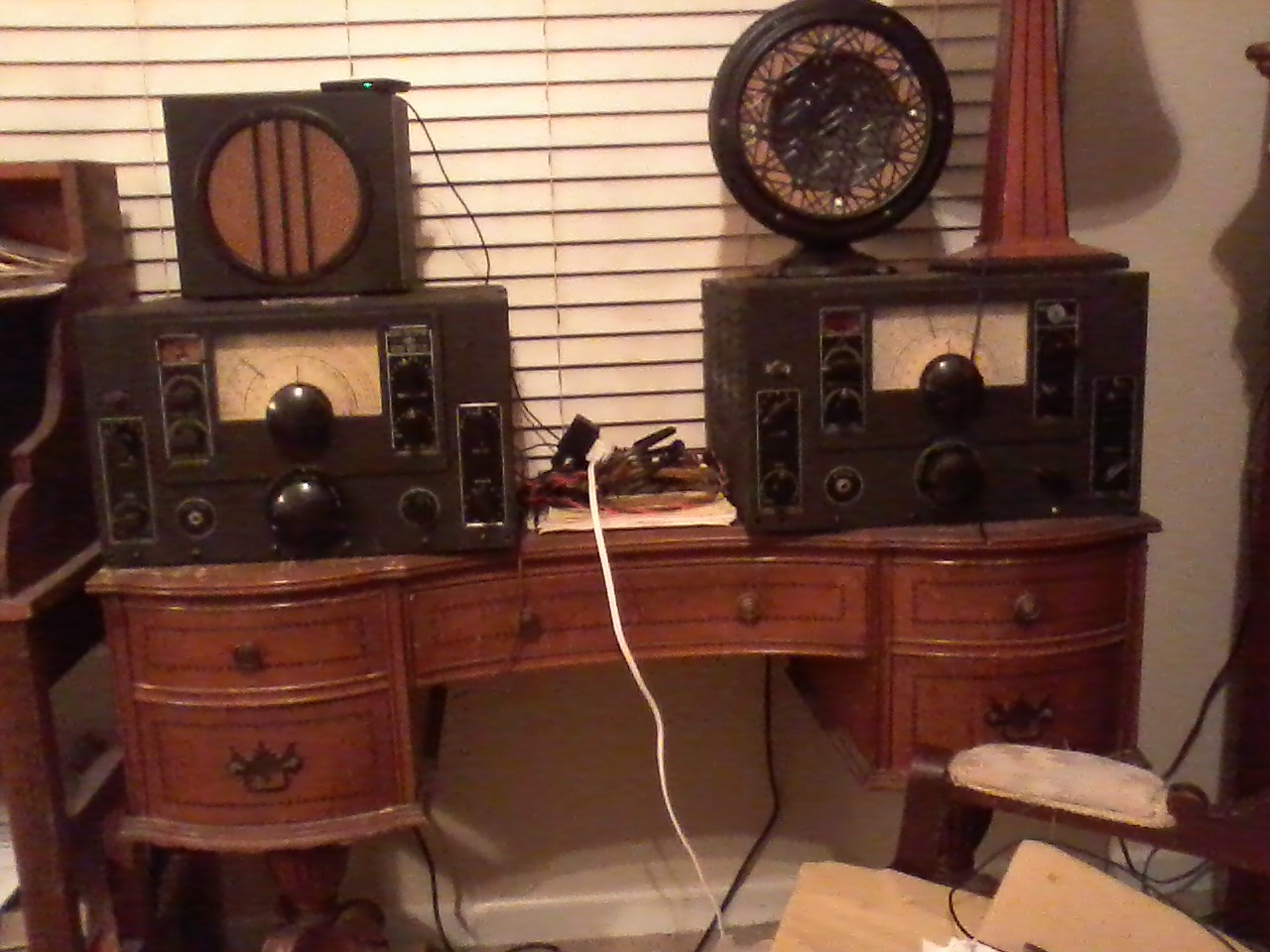10-03-2016, 10:55 PM
Two National WW2 era Naval receivers I recently restored.
One on the left is an RBH. it is based on a NC 100 set, but has an additional RF stage and one 6K6 output tube for a total of 11 tubes.
It features an IF of 1500KHz, so the frequency coverage of the set is 300-600KHz, 600-1200KHz, then it jumps to 1700-3900KHz, 3.6 MHz to 8.2MHz, and 8.0 to 17 MHz.
One on the right is an RAO. Since the IF is the more common 455 KHz, it covers the entire broadcast band and shortwave to 30 MHz in five bands. The tube line-up is the same as the RBH.
Both sets have a LARGE square box full of coils that slides under the chassis, the band switch controls where the contacts in the box meet those under the chassis. Oh yes, and because the Navy wanted the extra RF stage added, they both have an additional section to the tuning capacitor and a corresponding but smaller "box" that slides under an addition to the chassis/cabinet.
SO... both of these dimensionally small radios weigh about 70 ______-ing pounds.

One on the left is an RBH. it is based on a NC 100 set, but has an additional RF stage and one 6K6 output tube for a total of 11 tubes.
It features an IF of 1500KHz, so the frequency coverage of the set is 300-600KHz, 600-1200KHz, then it jumps to 1700-3900KHz, 3.6 MHz to 8.2MHz, and 8.0 to 17 MHz.
One on the right is an RAO. Since the IF is the more common 455 KHz, it covers the entire broadcast band and shortwave to 30 MHz in five bands. The tube line-up is the same as the RBH.
Both sets have a LARGE square box full of coils that slides under the chassis, the band switch controls where the contacts in the box meet those under the chassis. Oh yes, and because the Navy wanted the extra RF stage added, they both have an additional section to the tuning capacitor and a corresponding but smaller "box" that slides under an addition to the chassis/cabinet.
SO... both of these dimensionally small radios weigh about 70 ______-ing pounds.



![[-] [-]](https://philcoradio.com/phorum/images/bootbb/collapse.png)


